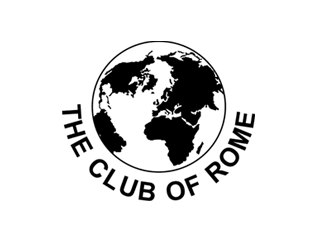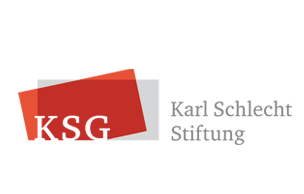Summary of Workshop #9: Post-Keynesian Economics
Workshop 9: Post-Keynesian Economics
During the Summer Academy – Exploring Economics, workshop group no.9 focussed on Post-Keynesian economic theory. On this occasion, the group had the pleasure to welcome Prof John King[1] of LaTrobe University, Melbourne and Prof Steve Keen of Kingston University, London, two most distinguished Post-Keynesian scholars advocating for a fundamentally new way of looking at the economy. After one week of intense studying and discussing, the group came up with the following summary of their work, portraying a good overview of what Post-Keynesianism is all about. Among the discussed elements also were policy implications for monetary and fiscal policy, respectively. Another prominent topic was Hyman Minsky’s Financial Instability Hypothesis Thesis, which offers a better way of understanding what causes financial crises and how economists can model such development. Lastly, the group discussed the distinct methodology of Post-Keynesian economic theory.
Founding Concepts
So what is Post-Keynesian theory? It developed out of the academic and intellectual need to further elaborate elements and theoretical issues John Maynard Keynes had laid out in his General Theory. Post-Keynesianism offers an academic third way after the New Neoclassical Synthesis (which emerged from mainstream neoclassical economics and New Keynesian thought) and forms an integral part of pluralism in economic thinking. It is opposed to mainstream economics in such a way that it rejects most of its assumptions about the economy and advocates a genuinely macroeconomic understanding. Although different theoretical schools of thoughts within Post-Keynesianism exist, they all share six core principles as laid out by A.P. Thirlwall in 1993[2]. Firstly, Post-Keynesians hold that unemployment and employment are determined in the product market, contrary to the neoclassical belief that it is determined in the labour market. Thus, secondly, involuntary unemployment can exist and is a result of the lack of effective demand. Thirdly, Post-Keynesians consider that investment causes savings. In the modern day capitalist economy, investment decisions are made by large corporations in anticipation of profit, hence driving the traditional income-expenditure model. Fourth, modern-day capitalism constitutes a money economy where money can be hoarded and is thus is fundamentally different from a barter economy which is the underlying idea in neoclassic economics. Also, the monetarist idea of the quantity theory of money is rejected – money is not neutral for the determination of output. For it is banks that create money in a modern capitalist economic system, the stock of money is demand-driven and thus forms an endogenous element of the economy. Lastly, all Post-Keynesians stress the importance of fundamental uncertainty in the economy and that capitalism is driven by the “animal spirits”.
Policy Implications
Post-Keynesian theory offers a wide set of feasible policy instruments. In terms of monetary policy, it should be clear that the Loanable Funds Theory is rejected. The stock of money supply is endogenous and money is created via double-entry book-keeping by banks themselves as they originate money and debt. Furthermore, Post-Keynesians are aware of the level of private debt and the possibility of the introduction of financial market innovation. Therefore, they suggest the implementation of a constant review/monitoring of financial products by regulators and the introduction of proper rules and restrictions as banks would usually circumvent regulation. The central bank should not be an independent, non-political institution. Rather, it should be designed as the monetary arm of governmental policy because otherwise, it may offset the impact of fiscal policy. Therefore, it should be under the control of the government to ensure it always supports the economic policy measures chosen by the government. The central bank itself should furthermore engage in employment- and credit-targeting in order to control the growth of private debt rather than solely targeting a certain inflation rate.
Post-Keynesians consider fiscal policy measures as very effective tools. Due to the rejection of Say’s Law and the possibility of high levels of (involuntary) unemployment, there is a whole range of situations where the fiscal intervention of the state is needed. Government spending is a necessary policy instrument to boost growth. Because of the rejection of both the Ricardian equivalence and the crowding-out of private investments, it is not important if these measures are financed by tax increases or by deficit spending. Moreover, it is not important to act according to the rules of sound finance. The state can even go quite heavily in debt in order to boost the economy back to a level of full employment.
Minsky’s Financial Instability Hypothesis
Hyman Minsky’s Financial Instability Hypothesis (FIH) implies that cyclical expectations, from euphoria to pessimism caused by fundamental uncertainty, combined with private debt accumulation, leading to booms and busts in the economy. Therefore, financial crises have to be modelled as systemic, rather than accidental events. According to Post-Keynesian perspective, potential reasons which caused the Great Financial Crisis can be derived from this theoretical framework. Taking into account the FIH, Post-Keynesians have identified conditions which have led to the Great Financial Crisis: Those could have been the increasing financialisation, which means that financial economy became an increasingly important share of GDP in comparison to other economic sectors; an unprecedented build-up of private debt, particularly in the US; the increasing influence of neoliberalism as a political ideology; and further de-regulation of financial markets.
Considering all these factors, some important lessons and policy proposals can be deduced. These are the need for de-financialisation, as well as that austerity was not the right policy response for stimulating effective demand. Arguably, there should be direct and indirect controls of financial markets, like a precautionary principle for financial products as well as limiting the growth of private debt and asset prices.
Post-Keynesian Methodology
Turning to Post-Keynesian methodology, it advocates the need for pluralism in economics, taking into account different perspectives in order to understand how the economy really works. This reality-based approach considers, among other things, that uncertainty is a fundamental characteristic of the world we live in. Post-Keynesians advance a new approach to modelling the economy and question the notion of the economy moving to some sort of equilibrium. By not focussing too heavily on equilibria-analysis, the complex underlying, mutually reinforcing mechanisms and forces driving the economy can arguably be better understood. They stipulate the dynamic interaction of macroeconomic variables instead of solely focussing on random external shocks to explain changes in the business cycle.
Accordingly, it is not helpful to look at the world in terms of supply and demand curves as they are not independent of one another. The economy should instead be modelled by taking into account complexity, dynamics and non-linearity. Another important element is the Post-Keynesians’ rejection of microeconomic foundations of macroeconomics with the fallacy of compositions: There are dynamics on the macroeconomic level that emerge from the interaction of diverse agents instead of inferring macroeconomic developments from the behaviour of one representative agent on the micro level.











